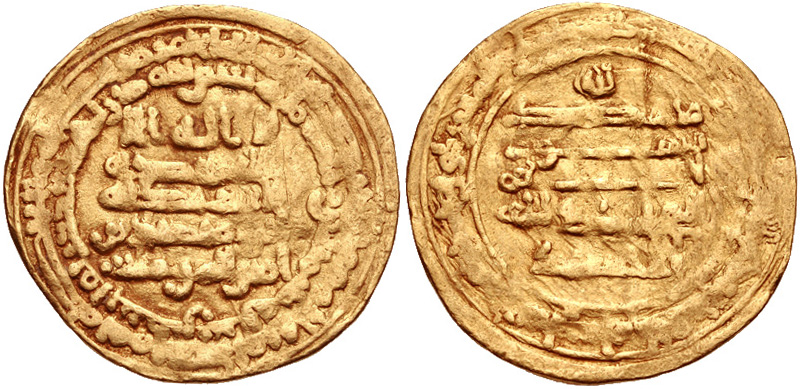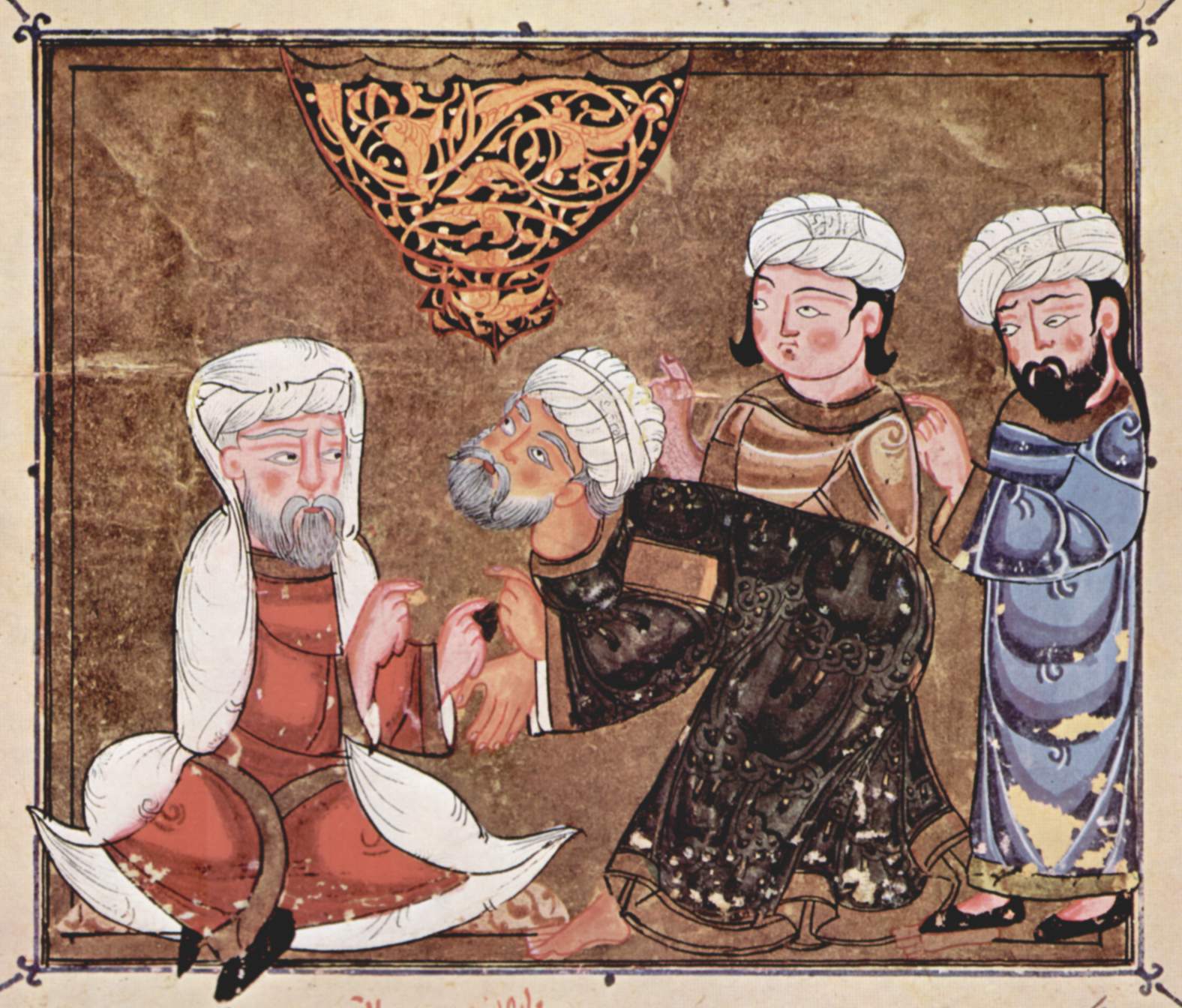|
Kaydar Nasr Ibn 'Abdallah
Nasr ibn Abdallah, known as Kaydar (; '' nisbah'' given variously as al-Safadi الصفدي or al-Sughdi الصغدي) was a governor of Egypt for the Abbasid Caliphate, serving there from 832 until his death in 834. Career Kaydar appears to have been of Sogdian descent, and he was considered a client of the Commander of the Faithful (''mawla amir al-mu'minin''). He was appointed to the governorship of Egypt by the caliph al-Ma'mun (r. 813–833) following the latter's visit to the province in February 832. The caliph also sent a "foreigner" (''ajam'') named Ibn Bistam to serve as chief of security ('' shurtah''), but Kaydar dismissed him over charges of bribery and ordered him to be whipped in the mosque, after which he appointed his own son Muzaffar to lead the ''shurtah'' instead. During Kaydar's governorship, al-Ma'mun ordered the beginning of the '' mihnah'' or inquisition, to ensure compliance with his belief that the Qur'an had been created. In 833 Kaydar received a l ... [...More Info...] [...Related Items...] OR: [Wikipedia] [Google] [Baidu] |
Nisba (onomastics)
In Arabic names, a ' ( ', "attribution"), also rendered as ' or ', is an adjective surname indicating the person's place of origin, ancestral tribe, or ancestry, used at the end of the name and occasionally ending in the suffix ''-iyy'' for males and ''-iyyah'' for females. , originally an Arabic word, has been passed to many other languages such as Turkish language, Turkish, Persian language, Persian, Bengali language, Bengali, Hindi language, Hindi and Urdu language, Urdu. In Persian, Turkish, and Urdu usage, it is always pronounced and written as '. In Arabic grammar, Arabic usage, that pronunciation occurs when the word is uttered in its construct state#Arabic, construct state only. The practice has been adopted in South Asian Muslim names. The to a tribe, profession or a town is the most common form of surname in Arabic. Original use A "relation" is a grammatical term referring to the suffixation of masculine -''iyy'', feminine ''-iyyah'' to a word to make it an adjecti ... [...More Info...] [...Related Items...] OR: [Wikipedia] [Google] [Baidu] |
Quranic Createdness
In Islamic theology, ''createdness of the Qurʾān'' (خلق القرآن, kḫalq al-qurʾān) is the doctrinal position that the Quran was created rather than having always existed and thus being "uncreated." One of the main areas of debate in aqida (Muslim theology) was the divine attribute of kalam (lit. word, speech) revealing itself through waḥy "revelation". Kalam is a counterpart to 'aql (Greek logos, "word," and thus "reason"). If the ʿaql/logos was part of God's essence or nature, then the Qur'an must therefore not be created. On the other hand, the Qur'an is written in Arabic (human speech) in the Arabic script, neither of which is eternal. The dispute over which position was factual became a significant point of contention in early Islam. The rationalist philosophical school known as the Mu'tazilites held that if the Quran is God's word, then logically, God "must have preceded his own speech". The Mu'tazilites and the Jahmites negated all the attributes of Go ... [...More Info...] [...Related Items...] OR: [Wikipedia] [Google] [Baidu] |
9th-century Iranian People
The 9th century was a period from 801 (represented by the Roman numerals DCCCI) through 900 (CM) in accordance with the Julian calendar. The Carolingian Renaissance and the Viking raids occurred within this period. In the Middle East, the House of Wisdom was founded in Abbasid Caliphate, Abbasid Baghdad, attracting many scholars to the city. The field of algebra was founded by the Muslim polymath al-Khwarizmi. The most famous Islamic scholar Ahmad ibn Hanbal was tortured and Imprisonment, imprisoned by Abbasid official Ahmad ibn Abi Du'ad during the reign of Abbasid caliph al-Mu'tasim and caliph al-Wathiq. In Southeast Asia, the height of the Mataram Kingdom happened in this century, while Burma would see the establishment of the major kingdom of Pagan Kingdom, Pagan. Tang china, Tang China started the century with the effective rule under Emperor Xianzong of Tang, Emperor Xianzong and ended the century with the Huang Chao#Rebellions, Huang Chao rebellions. In America, the Maya ... [...More Info...] [...Related Items...] OR: [Wikipedia] [Google] [Baidu] |
834 Deaths
__NOTOC__ Year 834 ( DCCCXXXIV) was a common year starting on Thursday of the Julian calendar. Events By place Europe * March 1 – Emperor Louis the Pious is restored as sole ruler of the Frankish Empire. After his re-accession to the throne, his eldest son Lothair I flees to Burgundy. * Danish Vikings raid the trading settlement of Dorestad (present-day Wijk bij Duurstede), located in the southeast of the province of Utrecht (modern Netherlands). * Summer – The Viking ship of Oseberg near Tønsberg (modern Norway) is buried in a mound, during the Viking Age (approximate date). * The first mention is made of the Jona River ('the cold one') in Switzerland (approximate date). Britain * King Óengus II dies after a 14-year reign. He is succeeded by his nephew Drest IX, as ruler of the Picts. By topic Religion * July 20 – Ansegisus, Frankish abbot and advisor of former emperor Charlemagne, dies at Fontenelle Abbey in Normandy (or 833). ... [...More Info...] [...Related Items...] OR: [Wikipedia] [Google] [Baidu] |
Isa Ibn Mansur Al-Rafi'i
Isa ibn Mansur al-Rafiqi, (; died 847) alternatively known as al-Rafi'i, was a governor of Egypt for the Abbasid Caliphate, holding that position from 831 to 832 and again from 843 to 847. First governorship Regarding Isa's background, the Egyptian chronicler Ibn Taghribirdi identified him as "Isa ibn Mansur ibn Musa ibn Isa al-Rafiqi, ''mawla'' of the Banu Nasr ibn Mu'awiyah" tribe of the Qays 'Aylan. In 830 he is mentioned by al-Kindi in connection with the suppression of a revolt in the Hawf district of Egypt during the governorship of Abdawayh ibn Jabalah. Following Abdawayh's dismissal in the following year, Isa was appointed as resident governor in his stead by Abu Ishaq (the future caliph al-Mu'tasim, r. 833–842), who held overall authority over the administration of Egypt and Syria, and he began his governorship around the beginning of 831. Shortly after Isa became governor, he was forced to deal with a major rebellion in Lower Egypt, where the local Arabs and Copts ... [...More Info...] [...Related Items...] OR: [Wikipedia] [Google] [Baidu] |
List Of Governors Of Islamic Egypt
Governors of Egypt in the Middle Ages, Arab Egypt (640–1250) and Mamluk Egypt (1250–1517). For other periods, see the Lists of rulers of Egypt, list of rulers of Egypt. Rashidun Caliphate (640–661) Umayyad Caliphate (661–750) Dates taken from John Stewart's ''African States and Rulers'' (2005). Abbasid Caliphate (750–969) Governors during the first Abbasid period (750–868) Dates taken from John Stewart's ''African States and Rulers'' (2005). Autonomous emirs of the Tulunid dynasty (868–905) Dates taken from John Stewart's ''African States and Rulers'' (2005). Governors during the second Abbasid period (905–935) Dates taken from John Stewart's ''African States and Rulers'' (2005). Autonomous emirs of the Ikhshidid dynasty (935–969) Dates taken from John Stewart's ''African States and Rulers'' (2005). Fatimid Dynasty (969–1171) Dates for Caliphs taken from John Stewart's ''African States and Rulers'' (2005). Ayyubid Sultanate (1171–1252) ... [...More Info...] [...Related Items...] OR: [Wikipedia] [Google] [Baidu] |
Divan
A divan or diwan (, ''dīvān''; from Sumerian ''dub'', clay tablet) was a high government ministry in various Islamic states, or its chief official (see ''dewan''). Etymology The word, recorded in English since 1586, meaning "Oriental council of a state", comes from Persian (''dêvân'') and consequently spread via Turkish ''divan''. It is first attested in Middle Persian spelled as ''dpywʾn'' and ''dywʾn'', itself hearkening back, via Old Persian, Elamite and Akkadian, ultimately to Sumerian ''dub'', clay tablet. The word was borrowed into Armenian as well as ''divan''; on linguistic grounds this is placed after the 3rd century, which helps establish the original Middle Persian (and eventually New Persian) form was ''dīvān'', not ''dēvān'', despite later legends that traced the origin of the word to the latter form. The variant pronunciation ''dēvān'' however did exist, and is the form surviving to this day in Tajiki Persian. In Arabic, the term was firs ... [...More Info...] [...Related Items...] OR: [Wikipedia] [Google] [Baidu] |
Harun Ibn Abdallah Al-Zuhri
Harun (, ), also transliterated as Haroon or Haroun or Hamroun, is a common male given name of Arabic origin, related to the Hebrew name of the Prophet Aaron. Both are most likely of Egyptian origin, from '' ꜥḥꜣ rw'', meaning "warrior lion". Given name Harun * Harun al-Rashid (died 809), famous Abbasid caliph, reigned from 786 until his death in 809 * Harun ibn Altun Tash (died 1035), governor of Khwarezm * Harun ibn Khumarawayh (died 904), fourth Tulunid Emir of Egypt * Harun ibn Muhammad, better known by his regnal name ''al-Wathiq bi'llah'', Abbasid caliph who reigned from 842 until his death in 847 * Harun ibn Ahmad al-Mu'tadid, son of the Abbasid caliph Al-Mu'tadid (r. 892–902). * Harun ibn Jaʿfar al-Muqtadir, Abbasid prince and son of Abbasid caliph al-Muqtadir (r. 908–932) * Harun Babunagari (1902-1986), Bangladeshi Islamic scholar * Harun Çabuk (born 1997), Turkish motorcycle racer * Harun Doğan (born 1976), Turkish sport wrestler * Harun Erdenay (born 19 ... [...More Info...] [...Related Items...] OR: [Wikipedia] [Google] [Baidu] |
Qadi
A qadi (; ) is the magistrate or judge of a Sharia court, who also exercises extrajudicial functions such as mediation, guardianship over orphans and minors, and supervision and auditing of public works. History The term '' was in use from the time of Muhammad during the early history of Islam, and remained the term used for judges throughout Islamic history and the period of the caliphates. While the and played the role in elucidation of the principles of Islamic jurisprudence () and the Islamic law (), the qadi remained the key person ensuring the establishment of justice on the basis of these very laws and rules. Thus, the qadi was chosen from amongst those who had mastered the sciences of jurisprudence and law. The office of qadi continued to be a very important one in every principality of the caliphates and sultanates of the various Muslim empires over the centuries. The rulers appointed a qadi in every region, town, and village for judicial and administrative cont ... [...More Info...] [...Related Items...] OR: [Wikipedia] [Google] [Baidu] |
Al-Mu'tasim
Abū Isḥāq Muḥammad ibn Hārūn al-Rashīd (; October 796 – 5 January 842), better known by his laqab, regnal name al-Muʿtaṣim biʾllāh (, ), was the eighth Abbasid Caliphate, Abbasid caliph, ruling from 833 until his death in 842. When al-Ma'mun died unexpectedly on campaign in August 833, al-Mu'tasim was thus well placed to succeed him, with the support of the powerful chief , Ahmad ibn Abi Duwad, he continued to implement the rationalist Islamic doctrine of Mu'tazilism and implementing policy. A younger son of Caliph Harun al-Rashid (r. 786–809), he rose to prominence through his formation of a private army composed predominantly of Turkic peoples, Turkic slave-soldiers (, sing. ). This proved useful to his half-brother, Caliph al-Ma'mun, who employed al-Mu'tasim and his Turkish guard to counterbalance other powerful interest groups in the state, as well as employing them in campaigns against rebels and the Byzantine Empire under the Amorian dynasty, Byzantine ... [...More Info...] [...Related Items...] OR: [Wikipedia] [Google] [Baidu] |
Mihna
The Mihna () was a period of religious persecution instituted by the Abbasid caliph al-Ma'mun in 833 in which Sunni scholars were punished, imprisoned, or even killed unless they conformed to Mu'tazilite doctrine. The policy lasted for eighteen years (833–851) as it continued through the reigns of al-Ma'mun's immediate successors, al-Mu'tasim and al-Wathiq, and four years of al-Mutawakkil who reversed it in 851. The abolition of Mihna is significant both as the end of the Abbasid Caliph's pretension to decide matters of religious orthodoxy, and as one of the few instances of religious persecution among fellow Muslims in Medieval Islam. Under al-Ma'mun In 827, the caliph al-Ma’mun issued the proclamation of the doctrine of Quranic createdness. The proclamation was followed by the institution of the Mihna six years later, approximately four months before his sudden death in 833. The Mihna continued under his successors, al-Mu’tasim and al-Wathiq, before al-Mutawakkil abolish ... [...More Info...] [...Related Items...] OR: [Wikipedia] [Google] [Baidu] |
Egypt In The Middle Ages
Following the Muslim conquest of Egypt, Islamic conquest in 641-642, Lower Egypt was ruled at first by governors acting in the name of the Rashidun Caliphs and then the Umayyad Caliphs in Damascus, but in 750 the Umayyads Abbasid Revolution, were overthrown. Throughout Islamic rule, Al-Askar, Askar was named the capital and housed the ruling administration. The conquest led to two separate provinces all under one ruler: Upper Egypt, Upper and Lower Egypt. These two very distinct regions were governed by the military and followed the demands handed down by the governor of Egypt and imposed by the heads of their communities. Egypt was ruled by many dynasties from the start of Islamic control in 639 until the early 16th century. The Umayyad period lasted from 658 to 750. The Abbasid period which came after was much more focused on taxes and centralizing power. In 868, the Tulunids, ruled by Ahmad ibn Tulun, expanded Egypt's territory into the Levant. He would rule until his death in ... [...More Info...] [...Related Items...] OR: [Wikipedia] [Google] [Baidu] |





